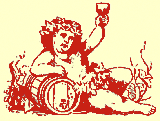


|
François Lurton: The World’s His Oyster Born to create fine and interesting wines, France’s François Lurton has never found a vineyard region in the world that he didn’t like – I just wish I had his air miles! Son of André Lurton (Château Bonnet, La Louvière, Dauzac, etc), François belongs to one of the great wine families and he’s personally added global pioneering to its stellar CV.
In the early days, he and his brother Jacques travelled far and wide, promoting the Lurton family wines and consulting to Marks & Spencer, Tesco, Hardy’s, Catena, Rémy Pannier, La Virginie and Ginestet. Along the way, they bought vineyards and built wineries, creating and selling their own wines. Jacques grew them, François sold them. Then, in 2007, François took over his brother’s stake and the firm became François Lurton SA. The Bordeaux company’s 80 wines generate $36 million sales, 90% abroad, with 200 employees, 10 enologists and 400 hectares plus 400 under contract. “We were young, liked to travel and were open to new challenges, and soon we discovered the regions with the strongest potential for quality and originality,” François explains. The brothers weren’t just looking for the best wine-growing conditions, they also wanted to connect with the people and their way of life. “We want our wines to express their own personalities and character, not just be part of a portfolio.” The start was in the Languedoc, where François saw the potential for New World-style wines from Midi’s ancient vines and superb terroirs. The brothers created today’s racy style of Mediterranean whites from the region. “If I were a vine, I’d want to be planted in Chile” is how François explains the later decision in 1992, to make wines there, starting with a pristine 200 ha estate in Colchagua to make high-end reds. In Argentina, the attraction was high-altitude virgin land, excellent climate and plentiful underground water in the Uco Valley. Production today is moving towards biodynamic in both locations. Lurton fell in love with Portugal’s rugged Douro Valley, first buying land beside the river and later a pre-phylloxera quinta of higher, terraced vines. Here’s a sampling of the Lurton wines available in Ontario:
La Chablisienne: Proud Terroiriste
Thank God for that, for fresh oysters, Arctic char, lemon chicken and grilled pork. Midway between Paris and Beaune, Chablis is the northern gateway to Burgundy’s treasure-house of wines. The vineyards, 4,700 hectares, bracket the River Serein around Chablis (pop. 2,500) and 19 other villages. And 25% of Chablis is made by La Chablisienne, a well-respected, old-established 300-member co-op (1923) with family growers in every Chablis appellation including the finest Grand Crus, Premiers Crus, Chablis and Petit Chablis. Forged in tough economic times, the co-op at first used to bottle and sell the members’ finished wines. Today, with a powerful team of technical advisers and meticulous winemakers, the co-op has direct control, from receiving the fresh-pressed Chardonnay juice to the ultimate wine sales. The individual wines, 30 of them, all from eco-friendly vineyards, bear the hallmark of their own particular terroir, handmade products of place and time.
The subtle use of oak barrels is said to “reveal” the wines rather than put make-up on them. The wines’ main terroir component is the intense minerality of the Kimmeridge clay/limestone studded with oyster fossils that underlies Chablis north to the Channel, the white cliffs of Dover and southern England. From Cretaceous seabeds 150 million years ago and today’s continental climate (severe winters, frosty springs, hot summers and falls) are geology’s gift to Chablis winemakers. Les Venerables Vignes ’06 from La Chablisienne, $24.95 at the LCBO, is a good example of a standard Chablis. Pale gold in color, showing stony minerality, with hints of summer straw, tingly acidity and good length, is a best-seller in North America. Elegant and well priced (91), less than 20% sees a subtle aging in old oak. Premier Cru Les Vaulorents ’06 (a low-acid vintage that’s very user-friendly) offers floral vanilla-peach and grapefruit minerality and is showing well now (92). Grand Crus benefit from cellaring although North Americans tend to prefer young vintages. Grand Cru Blanchot ’05 Château is steely and mineral-rich (92) but the star is Grand Cru Château Grenouilles ’05, a mere 18 acres in the heart of Chablis, whose tiny production shows a hint of new oak along with a ton of limestone minerality, apple-floral depth and finesse (93). Chablis has an amazing variety of sites and terroirs, mostly south-facing, but the region’s strength is the pride of its producers in their individual plots (climats), and the magic they create with old Chardonnay vines, here in their Burgundian homeland. Planted by 12th Century Cistercian monks, this noble grape, through trial and error and persistent attention, has reached a pinnacle found nowhere else. It’s safe in the hands of La Chablisienne. Cellar note: Petit Chablis shows perfectly from 1 to 3 years old, Chablis 2-5 years, Premier Crus and Grand Crus 5-10 years to reach perfection, but sometimes you just can’t wait!
|
||
